The common merganser
The beautiful bird can be seen in several places along the coast at the island of Als.
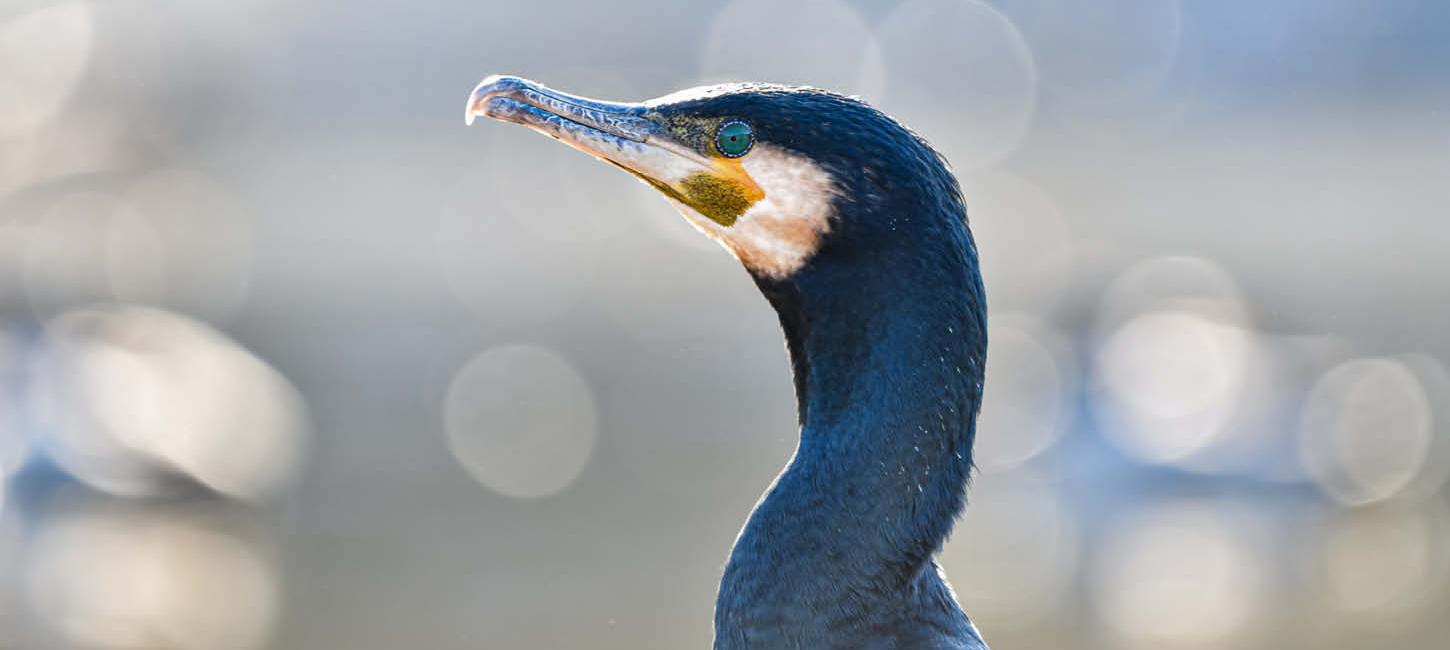
Bring your monocular on your holiday to Holiday Island øen Als, Broagerland and the forest Gråstenskovene, the various and scenic landscape of the Sønderborg-area is rich on bird life.
Why not bring the book on birds and the monocular, since your holiday to island Als is in an area rich on bird life?
The island Als is not only rich on bird life itself, it is also situated at the migration route of birds traveling from southern Europe to Sweden. Especially Tontoft Nakke at the northern point of island Als is a good spot for bird watching, were you can observe the spring migration from March to May, some birds tend to rest here for a while before they have to gross the waters.
the Mute swan was chosen to be Denmark´s national bird by viewers vote in 1984.
that Sønderjylland's largest colony of breeding Eider ducks is found on the small island Katholm near Als.
that except for a few species with established hunting seasons, all birds in Denmark are protected and may not be captured, killed, or have their eggs collected/destroyed.
In 2006-07, the many municipalities in Denmark were united, creating a smaller number of municipalities. In our area, the joining municipalities were Gråsten, Sundeved and Broager on the mainland and Nordborg, Augustenborg, Sydals and Sønderborg on island Als. The Danish government decided that each municipality should have assigned a bird species to protect and help progress in numbers.
Sønderborg Municipality were assigned the Eurasian golden oriole and this was not an easy task – at the time, the bird had not been observes in the area for the last 10 years. The mayor of that time, Jan Prokopek Jensen, sent a nice letter to the minister of environment asking if it was possible to switch to the Common merganser, a bird found in the area, the request was granted.
Like many other bird species in Denmark, the Common merganser is threatened by extinction and today the breeding popularity is still low.
The map below provides you with an overview of selected locations for bird watching on the island Als, at Broagerland and at the forest Gråstenskovene.
Here you'll find a small selection of bird species in the Sønderborg area. For each of them, you can choose to listen to their calls and learn more via a link to the species on the DOF database, where the society, Dansk Ornitologisk Forening, provides an overview of Denmark's birds, their lifestyles, as well as their development and challenges.
In addition to collecting data on Denmark's bird life, the Dansk Ornitologisk Forening also has a project focusing on threatened and rare breeding birds, including the White Stork, Black Stork, White-tailed Eagle, Golden Eagle, Osprey, Peregrine Falcon, Montagu's Harrier, Short-eared Owl, Boreal Owl, Mediterranean Gull, and Tawny Pipit.
Of the above-mentioned species, the White-tailed Eagle breeds in the Sønderborg area, while breeding pairs of White Stork, Peregrine Falcon, and Mediterranean Gull can be found in Southern Jutland.
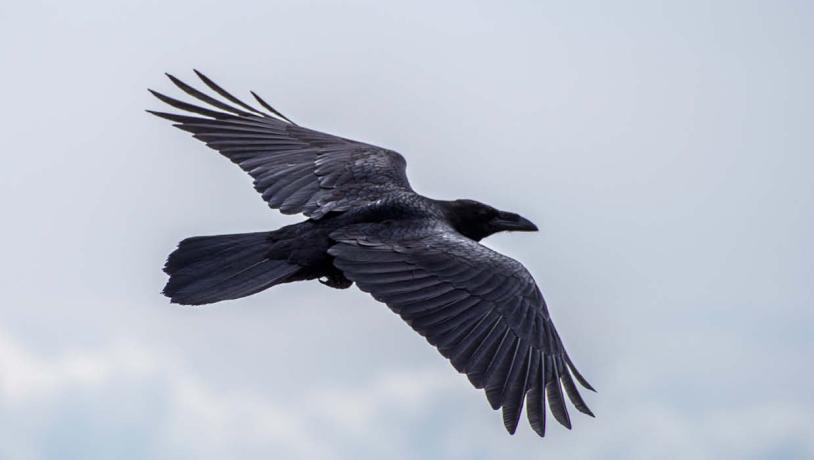
If you spot a giant crow, it´s likely you are looking at the Northern raven. Black as coal. Twice the size of its cousin the crow and recognizable on its voice with the deep croak.
This vice bird is also known from Norse mythology; Odin’s ravens´ Huginn and Muninn are his eyes in the sky. The northern raven has fascinated people since the time of the Vikings and before the Danish flag Dannebrog is introduced in 1219, a red banner with a black raven was used.
Unfortunately, the love to the raven stopped and the species was exposed to persecution and poisoning. In 1950, the stock was down to 16 pairs in Denmark, found in Southern Jutland and on island Funen. Luckily, times has changed and the raven population is slowly but continuously exceeded to approx. 800 pairs. Today they are found all over on the island Als and on the mainland surrounding Gråsten.
We actually have a so-called raven wood in our area, at the small wood Avnbøl Sned near Gråsten, the raven’s get-together at night time.
Facts about the Raven:
Length: 64 cm
Wingspan: 120-150 cm
Weight: 800-1,500 g
Listed on the Danish Red List as LC (Least Concern).

The Common kingfisher - the small blue lightning, can be seen at the cove Ketting Nor on island Als, at the lake Sandbjerg Sø and the lakes of the forest Gråstenskovene - that is if you are lucky and have your eyes about you!
You must keep the eyes about you, in spite of the kingfisher having very beautiful and bright colour it is extremely speedy on the wings. That is why, most photos of the kingfisher is shot of the bird sitting on its favourite branch – the one it dives from while fishing and kills the fish on, by dashing the fish head against the branch before swallowing it whole.
Nests are built into steep cliffs, where they, at the end of a 1-meter-long passage, accommodate 2-3 broods with 5-7 eggs each.
Facts about the Common kingfisher:
Length: 16 cm
Wingspan: 24-25 cm
Weight: 40-45 g
Listed on the Danish Red List as VU (vunerable).
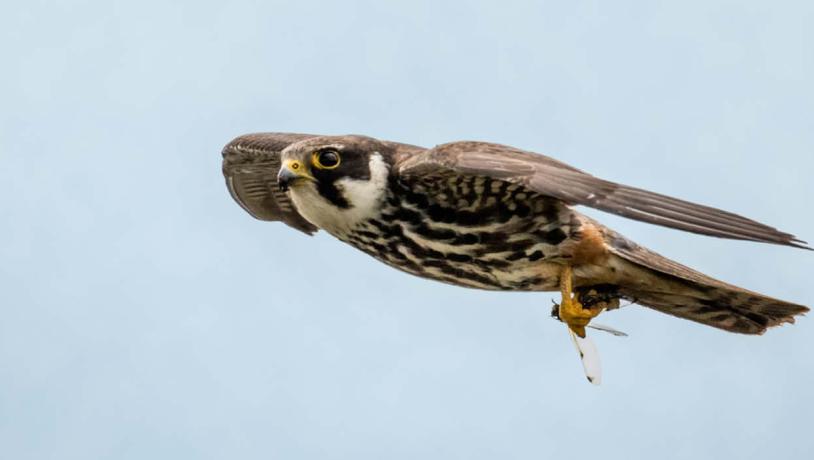
The Eurasian hobby prefers to breed in warm areas with old forests, ideally close to meadows and wetlands with large populations of small birds and insects. In 2020, 2 breeding pairs were recorded in the Sønderborg area.
This medium-sized falcon is a truly rare breeding visitor in Denmark. It feeds on small birds and insects, with dragonflies being at the top of its menu, which are abundant in the Sønderborg area. The Eurasian hobby has long slender wings and is such a skillful flyer that it can catch swallows and Common swifts in the air. It closely resembles the Common kestrel in appearance but unlike the Kestrel, the Eurasian hobby does not hover.
Facts about the Eurasian Hobby:
Length: 34 cm
Wingspan: 70-84 cm
Weight: Male 130-230 g, Female 140-340 g
Listed on the Danish Red List as CR (Critically Endangered).
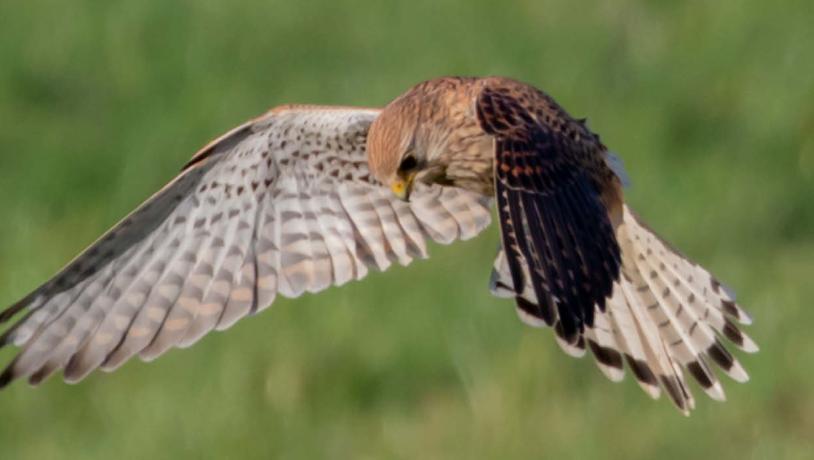
If you see a raptor standing completely still in the air while intensely looking down at the ground, it is most likely a Common kestrel. This hunting method is called "hovering" - the Kestrel stands with its tail spread in the air, supporting itself with rapid wingbeats, and then suddenly makes a lightning-fast dive towards the ground, seizing a rodent with its talons.
Facts about the Common kestrel:
Length: 34 cm
Wingspan: 65-80 cm
Weight: Male 190-240 g, Female 220-300 g
Listed on the Danish Red List as LC (Least Concern).
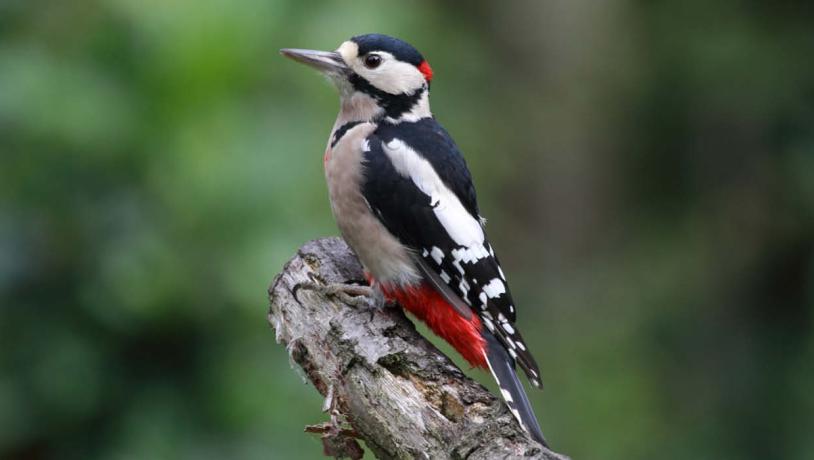
You will probably hear the Great spotted woodpecker long before you eye it. The food is mainly insects and larva found in the tree stems. Like all species of woodpeckers, the cranium of the Great spotted woodpecker is of a special construction allowing it to pick hard with its beak on tree stems without conceiving a concussion to the brain.
When hearing the drumming the wild chase is on around the trees whilst looking up to spot the bird and it can be sitting very high up the tree.
The Great spotted woodpecker is often heard and seen in the forest on island Als and the forest Gråstenskovene. Listen for the well-known drumming in the treetops at the arear of oak trees named Brudgomsegene at forest Nørreskoven Als or in the small forest Blomeskobbel on Holiday Island Als.
Facts about the Great spotted woodpecker:
Length: 23 cm
Wingspan: 34-39 cm
Weight: 90 g
Listed on the Danish Red List as LC (Least Concern).
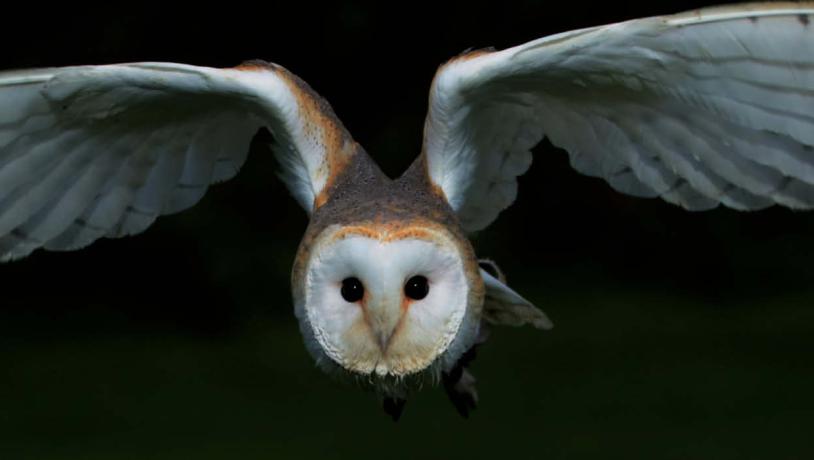
If you hear short and horse screams in the dark of the night, it is probably the male of the Barn owl marking its preserves.
The Barn owl is an extremely beautiful bird. Huge black eyes surrounded by a hearth shaped white face; the topside of the feathers is white-golden and blue-grey with a sprinkle of pearl like spots.
Barn owls are pronounced nocturnal and hardly ever seen. It is common in most parts of Europe, however, in Scandinavia it is only found in Denmark. Within our country, Barn owls only breed in South and Southwest Jutland and a portion of these breeding pairs has been registered on the island Als and in Broagerland.
Facts about the Barn owl:
Length: 34 cm
Wingspan: 85-93 cm
Weight: Male 290-340 g, Female 330-460 g
Listed on the Danish Red List as LC (Least Concern).
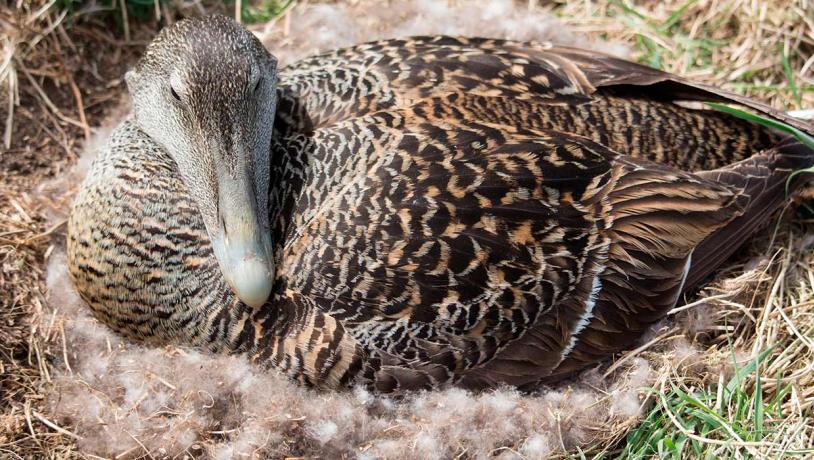
The Common eider duck is very easy to recognize by its triangular head. The male has a very beautiful plumage in black and white colors with a peach-colored breast and a greenish neck. The female, on the other hand, has plumage designed to blend in with the surroundings when she is on the nest.
The Eider duck lays 1 clutch of 4-6 eggs, and when the female leaves the nest, it is important that it happens calmly and in order so that she covers the yellow-green eggs with down, thus hiding them from greedy neighbors, such as gulls, who love the eggs of others.
Facts about the Eider duck:
Length: 58 cm
Wingspan: 80-108 cm
Weight: 1,200-2,800 g
Listed on the Danish Red List as NT (Near Threatened).
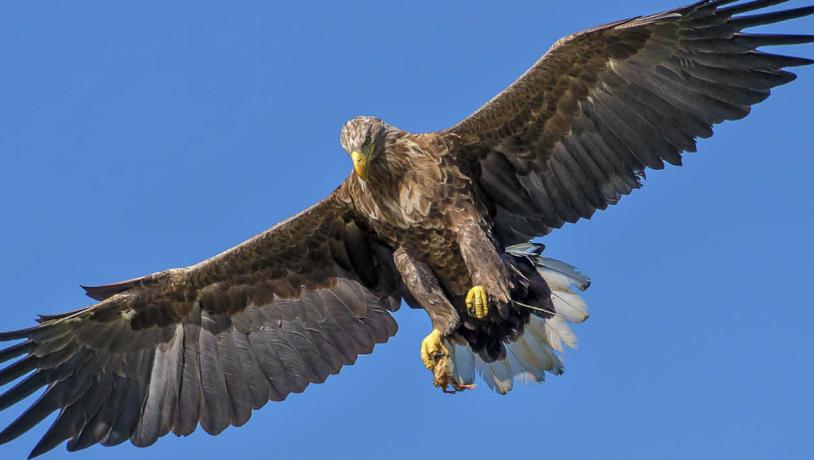
People who has seen the king of all birds – the White-tailed eagle, often use this description. With a wingspan of 200 – 250 cm we are talking about the largest bird of prey in Northern Europe, its wingspan is actually 20 cm wider than that of America’s national bird – the Bald eagle.
The white-tailed eagle has been wiped out in Denmark; however, a re-immigration in the 90s has led to that, we can spot this majestic bird of prey again gliding high up in the sky and we have several pairs breeding in the Sønderborg-area.
White-tailed eagles prey on fish, smaller birds and carcasses. On the island Als there is frequently observations at the lakes Mjels Sø and Bundsø on North-Als, at the cove Ketting Nor and Torup Made close to Augustenborg.
Facts about the White-tailed Eagle:
Length: 70-90 cm
Wingspan: 200-250 cm
Weight: Male 3,100-5,500 g, Female 4,100-7,000 g
Listed on the Danish Red List as LC (Least Concern).
The nature guides in Sønderborg have written a series of recommendations regarding some special birds and bird areas in Sønderborg Municipality.